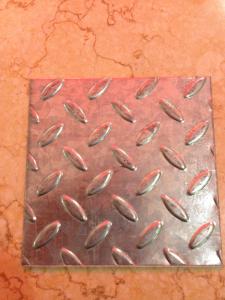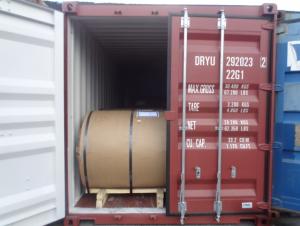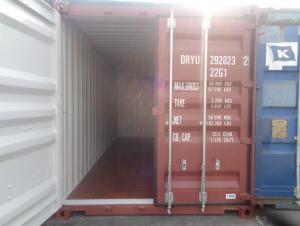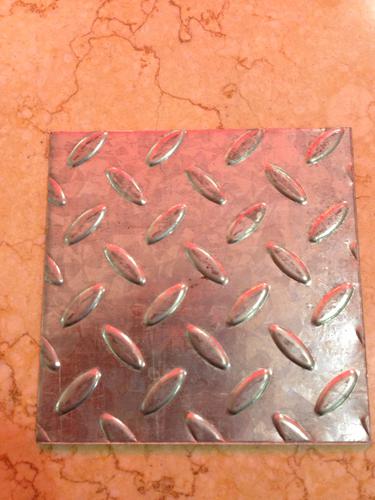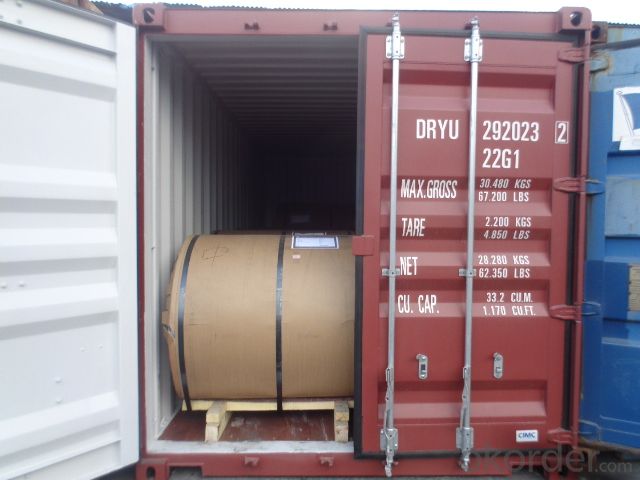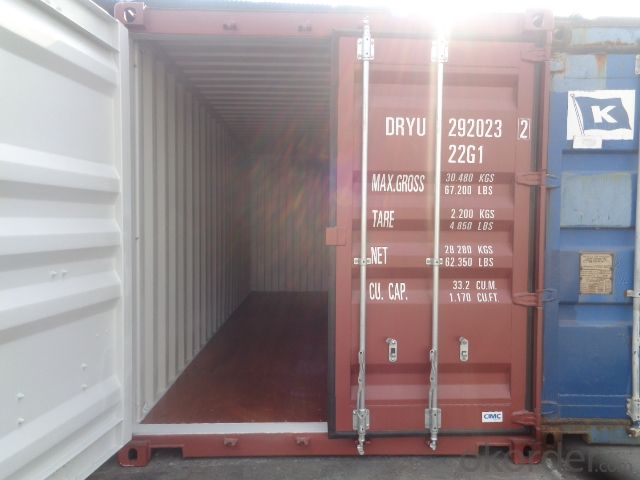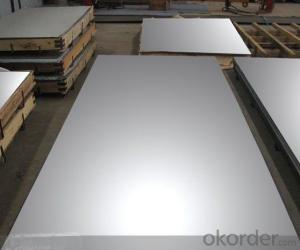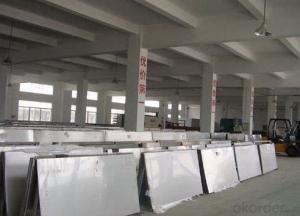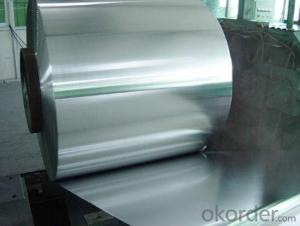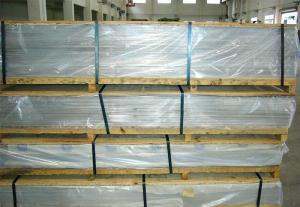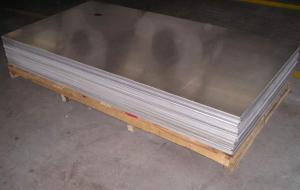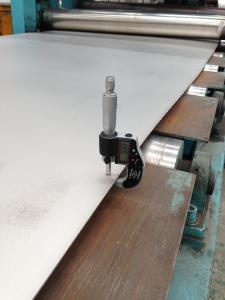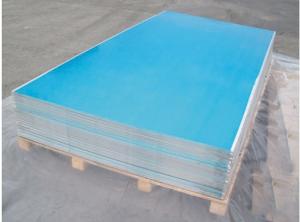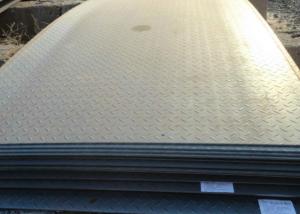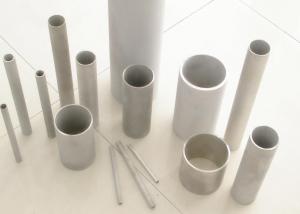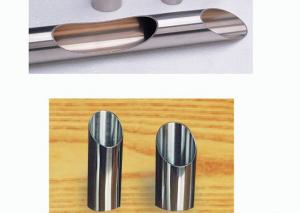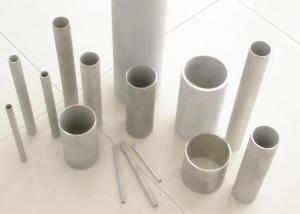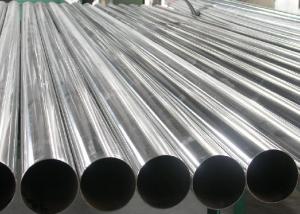Checkered Stainless Steel Sheet With Best Price In Stocks
- Loading Port:
- Shanghai
- Payment Terms:
- TT or LC
- Min Order Qty:
- 4 m.t.
- Supply Capability:
- 4000 m.t./month
OKorder Service Pledge
OKorder Financial Service
You Might Also Like
1.Structure of Product Description
Stainless steel sheet/STAINLESS STEEL PLATE is widely used in the field of construction field and decoration field, etc. There are many different grades, such as: 200 series, 300 series, 400 series, 900series, etc. The detailed grade are as follows: 201, 202, 301, 304, 316, 410, 420, 430, etc.
The surface is including 2B, BA, Mirror Finish, Checkered, etc.
2. Main features of the product
b. Frist-Class Service.
c. Shortest service.
3. Image.
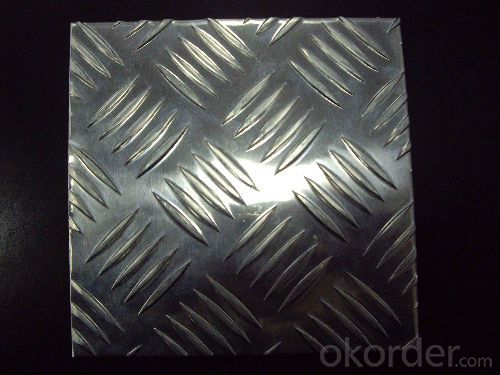
4. Product detailed sizes:
1000mm*2000mm,1250mm*2500mm,1500mm*3000mm, etc.
5. FAQ:
What is the quality standard?
---Usually our standard is GB3880-2006 or else.
What is the width range?
---It is from 1000mm to 2500mm, etc.
What is the length range?
---It is from 2000mm to 6000mm, etc.
What is the MOQ for your products yet?
---Normally it is around 5 tons/each size.
How many tons did you export in one year?
---Normally it is around 9000 tons totally.
---Normally it is from USA, UAE, ENGLAND, ETC.
what is your mainly products?
---Normally they are stainless steel sheet, stainless steel coil, stainless steel checkered sheet, stainless steel mirror finished sheet, color coated stainless steel sheet, etc.
- Q: Can stainless steel sheets be used for sink fabrication?
- Yes, stainless steel sheets can be used for sink fabrication. Stainless steel is a durable and corrosion-resistant material that is commonly used for sinks due to its hygienic properties and ease of cleaning.
- Q: Are stainless steel sheets suitable for wastewater treatment plants?
- Stainless steel sheets, indeed, prove to be a suitable option for wastewater treatment plants. Renowned for its resistance to corrosion, stainless steel emerges as an optimal selection for environments characterized by excessive moisture and chemical exposure, such as wastewater treatment plants. The material exhibits an ability to endure harsh conditions and guarantee long-lasting durability. Moreover, stainless steel's ease of cleaning and maintenance proves to be crucial in a wastewater treatment facility where cleanliness and hygiene take center stage. The material's high strength-to-weight ratio further enhances its suitability for a range of applications within the plant, including tanks, piping, and equipment. All in all, stainless steel sheets undoubtedly stand as a dependable and pragmatic choice for wastewater treatment plants.
- Q: How do you remove rust or corrosion from stainless steel sheets?
- There are several effective methods to remove rust or corrosion from stainless steel sheets. One common approach is to use a mixture of baking soda and water to create a paste, which can be applied to the affected areas and gently scrubbed using a soft cloth or sponge. Another option is to use vinegar or lemon juice, which have natural acidic properties that can help dissolve the rust. Simply soak a cloth in either of the liquids and rub the affected areas until the rust is removed. For more stubborn rust or corrosion, using a commercial stainless steel cleaner or a fine-grit sandpaper can be effective. It is important to always follow the manufacturer's instructions and to test any cleaning method on a small, inconspicuous area before applying it to the entire surface.
- Q: How do I prevent intergranular corrosion on stainless steel sheets?
- To prevent intergranular corrosion on stainless steel sheets, there are several steps that can be taken: 1. Opt for the appropriate stainless steel grade: Choose stainless steel grades that are specifically designed to resist intergranular corrosion, such as 304L, 316L, or 321. These grades have a lower carbon content, which minimizes the formation of chromium carbides at grain boundaries. 2. Apply heat treatment: After fabrication or welding, subject the stainless steel sheets to a solution annealing or post-weld heat treatment process. This treatment eliminates any chromium carbides that may have formed during welding or high-temperature processing, effectively preventing intergranular corrosion. 3. Avoid high temperature exposure: It is crucial to avoid subjecting stainless steel sheets to temperatures between 450 to 850 degrees Celsius (842 to 1562 degrees Fahrenheit) for extended periods. Prolonged exposure to such temperatures can lead to the formation of chromium carbides at the grain boundaries, rendering the stainless steel susceptible to intergranular corrosion. 4. Utilize proper welding techniques: When welding stainless steel sheets, it is important to employ low heat input and minimize the duration of exposure to high temperatures. These measures help reduce the formation of chromium carbides and preserve the corrosion resistance of the stainless steel. 5. Employ pickling and passivation: After fabrication or welding, ensure that the stainless steel sheets undergo thorough pickling and passivation. Pickling removes any surface contaminants, while passivation forms a protective oxide layer that prevents intergranular corrosion. 6. Regularly maintain and clean: To prevent potential corrosion, it is essential to keep the stainless steel sheets clean and free from contaminants. Regularly clean the surfaces using mild detergents and avoid the use of harsh chemicals or abrasive materials that may damage the protective oxide layer. By following these preventative measures, the risk of intergranular corrosion on stainless steel sheets can be significantly reduced, allowing for the preservation of their corrosion resistance properties and an extended lifespan.
- Q: What is the tensile strength of stainless steel sheets?
- The tensile strength of stainless steel sheets can vary depending on the specific grade and thickness of the material. Generally, stainless steel sheets exhibit a higher tensile strength in comparison to other materials. For instance, stainless steel sheets like the commonly used 304 and 316 grades typically possess tensile strengths ranging from 515 to 690 megapascals (MPa) or 74,800 to 100,000 pounds per square inch (psi). However, it is crucial to note that the tensile strength values may differ for various grades and thicknesses of stainless steel sheets. It is always advisable to seek precise information regarding the tensile strength of specific stainless steel sheets from the manufacturer or supplier.
- Q: What's the difference between stainless steel 302 and 304?
- Plate type heat exchanger, corrugated pipe, household appliances (1, 2 kinds of tableware, kitchen cabinet, indoor pipeline, water heater, boiler, bath), auto parts (windshield wiper, muffler, mold), medical appliances, building materials, chemical, food industry, agriculture, marine parts, millet mobile phone etc.. 304 stainless steel is a nationally recognized food grade stainless steel.
- Q: How do you install stainless steel sheets?
- To install stainless steel sheets, you will need a few basic tools and follow these steps: 1. Measure and prepare: Start by measuring the area where you want to install the stainless steel sheets. Ensure that the surface is clean, dry, and free from any dust or debris. If needed, sand down any rough spots or imperfections on the surface. 2. Cut the sheets: Using a metal cutting tool like a circular saw or a jigsaw with a metal cutting blade, cut the stainless steel sheets to the desired size and shape. Make sure to wear safety goggles and gloves while cutting to protect yourself. 3. Apply adhesive: Apply a high-strength construction adhesive to the backside of the stainless steel sheet. Make sure to apply the adhesive evenly, leaving no gaps or air pockets. You can also use a notched trowel to spread the adhesive for better coverage. 4. Position and secure: Carefully place the stainless steel sheet onto the prepared surface, making sure to align it properly. Apply gentle and even pressure to ensure the sheet adheres to the surface. You can use a roller or a clean cloth to press the sheet firmly onto the surface. 5. Secure with screws: If necessary, use stainless steel screws to secure the sheet further. Place the screws along the edges and corners, ensuring they are evenly spaced. Make sure not to overtighten the screws to avoid damaging the sheet. 6. Trim and finish: If any excess stainless steel sheet is hanging over the edges, use a metal cutting tool to trim it down to the desired size. Once trimmed, smooth out any rough edges using a file or sandpaper. You can also use a stainless steel cleaner to remove any smudges or fingerprints and give it a polished finish. Remember to always follow the manufacturer's instructions for the specific stainless steel sheets you are using, as installation methods may vary slightly. Additionally, it is recommended to seek professional assistance if you are unsure or not comfortable with the installation process.
- Q: Can stainless steel sheets be used for elevator shafts?
- Elevator shafts can indeed utilize stainless steel sheets, as they offer durability, resistance to corrosion, and an appealing aesthetic. By employing stainless steel sheets, one can ensure a lasting and easy-to-maintain solution, as they resist rust and corrosion caused by factors like humidity, moisture, and chemicals. Moreover, stainless steel possesses strength and can withstand the weight and stress typically encountered by elevator shafts. The sleek and contemporary look of stainless steel further enhances the overall design value of the elevator shaft. Consequently, stainless steel sheets serve as a dependable and fitting material choice for constructing elevator shafts.
- Q: Are stainless steel sheets environmentally friendly?
- Stainless steel sheets are considered to be environmentally friendly for several reasons. First and foremost, stainless steel is a highly durable and long-lasting material. Unlike other materials such as plastic or wood, stainless steel sheets do not deteriorate easily and have a lifespan of several decades. This means that they do not need to be frequently replaced, reducing the amount of waste generated. Additionally, stainless steel is 100% recyclable. At the end of its life cycle, stainless steel can be melted down and reused to create new products, without losing any of its original properties. This significantly reduces the demand for raw materials and the energy required for manufacturing new products. Furthermore, stainless steel sheets are non-toxic and do not release harmful chemicals into the environment. Unlike some plastics or treated woods, stainless steel does not emit VOCs (volatile organic compounds) or other pollutants that can contribute to air or water pollution. Stainless steel is also corrosion-resistant, which means that it requires minimal maintenance and does not require chemicals or coatings to protect it from rust or degradation. This reduces the reliance on environmentally harmful substances and minimizes the release of pollutants into the environment. In summary, stainless steel sheets are considered to be environmentally friendly due to their durability, recyclability, non-toxic nature, and resistance to corrosion. These qualities make stainless steel a sustainable and responsible choice for various applications, ranging from construction to household appliances.
- Q: What are the different types of stainless steel sheets available?
- There are several different types of stainless steel sheets available in the market, each with its own unique properties and applications. Some of the most common types include: 1. Austenitic Stainless Steel Sheets: This type of stainless steel is the most widely used and offers excellent corrosion resistance, high strength, and good formability. It is commonly used in kitchen equipment, food processing plants, and pharmaceutical industries. 2. Ferritic Stainless Steel Sheets: Ferritic stainless steel sheets have a higher chromium content and lower carbon content compared to austenitic stainless steel. They are known for their excellent resistance to stress corrosion cracking and are often used in automotive applications, architectural structures, and appliances. 3. Martensitic Stainless Steel Sheets: Martensitic stainless steel sheets have a higher carbon content compared to other types, which gives them high strength and hardness. They are commonly used in applications requiring wear resistance, such as cutlery, surgical instruments, and turbine blades. 4. Duplex Stainless Steel Sheets: Duplex stainless steel sheets have a mixed microstructure of austenite and ferrite, which provides them with a combination of high strength and excellent corrosion resistance. They are often used in chemical processing plants, oil and gas industries, and marine environments. 5. Precipitation Hardening Stainless Steel Sheets: Precipitation hardening stainless steel sheets are heat-treatable and offer high strength and corrosion resistance. They are commonly used in aerospace applications, defense equipment, and high-performance industries. It's important to consider the specific requirements of your project or application when choosing the type of stainless steel sheet, as each type has its own set of properties and advantages.
Send your message to us
Checkered Stainless Steel Sheet With Best Price In Stocks
- Loading Port:
- Shanghai
- Payment Terms:
- TT or LC
- Min Order Qty:
- 4 m.t.
- Supply Capability:
- 4000 m.t./month
OKorder Service Pledge
OKorder Financial Service
Similar products
Hot products
Hot Searches
Related keywords
